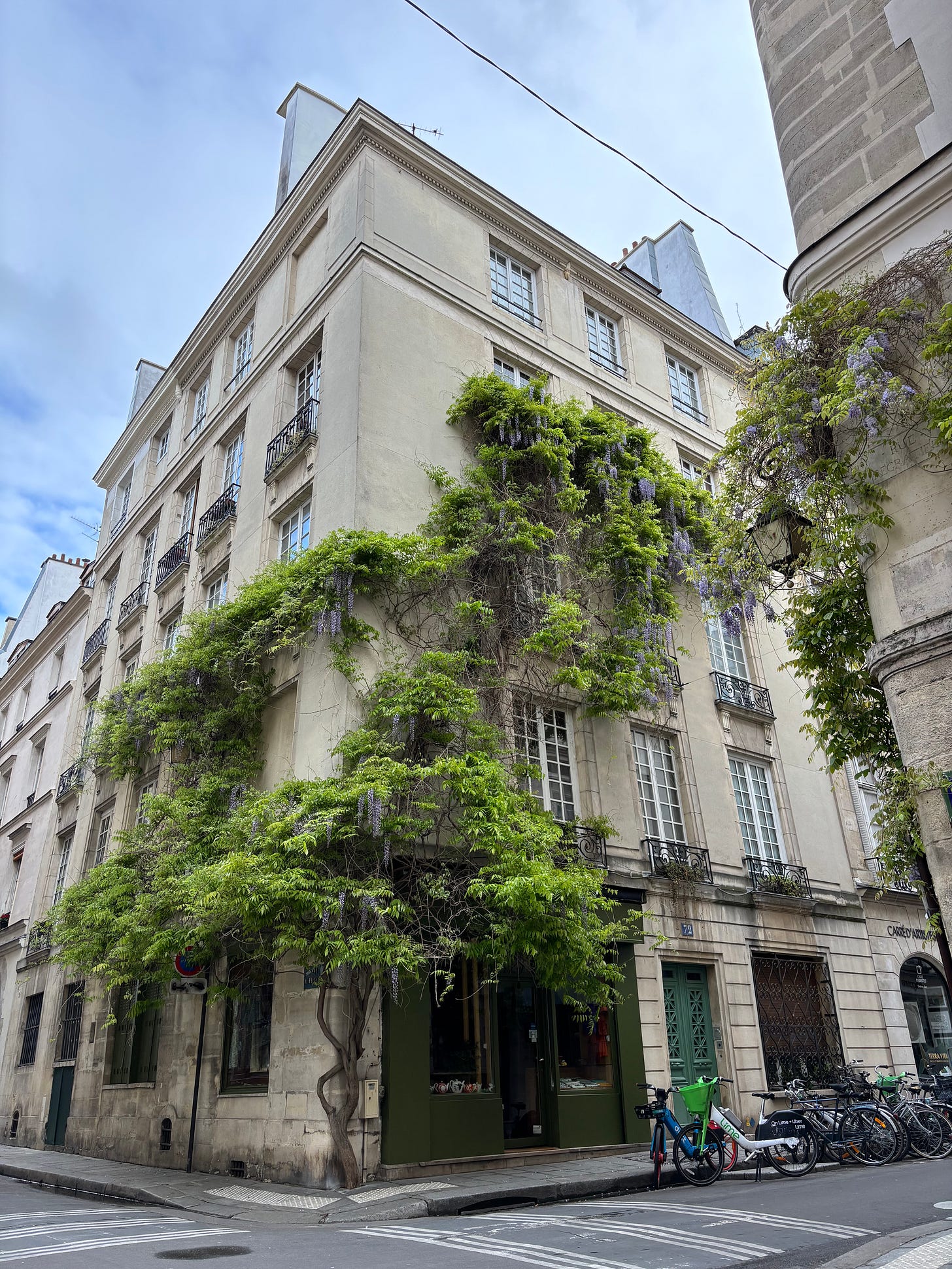Sacred Musings: April 2025
Sinners & Paris Noir

Bonjour à tous et à toutes,
Hello from Paris, where spring appears to have sprung. The museums are packed, the streets are crowded with tourists from all over, and life continues on, even amongst the chaos that is 2025.
To those who came out for the Orpheus screening at PRS at the beginning of the month, thank you! We will be closing out the trilogy with an event unlike the previous two, so keep your eyes peeled for more information. A video of the full Q&A is also coming soon, for those who were not able to make it in person.
I was alerted to the death of Pope Francis by the Notre Dame bells, which rang 88 times the morning of April 21st; I can hear them from my home here. While I am someone who will always be skeptical of the Catholic Church (and any organized body of religion or government, for that matter), Pope Francis seemed to be a pretty cool guy — I don’t know that we’ll ever see another nightclub bouncer-turned-cardinal ascend to the Papacy again, that’s for sure. Conclave was one of the few “awards” movies I managed to catch last year, and I suppose there is no better time to watch it if you haven’t yet.
On the topic of films, I spent my Easter Sunday at a showing of Ryan Coogler’s brilliant Sinners. If you are on the fence about seeing it, GO SEE IT — I was so blown away by it that I walked home in the rain, sans umbrella, totally lost in thought. I came for the Southern vampires (if you’re a long-time subscriber, you may already know that I love a vampire) but was struck dumb by the layered, emotional, and rich excavation of blues music, Delta folklore and Black culture — so much so that I went and saw it again a few days later.
There’s always an abundance of exhibitions to see here in Paris, and I’ve been making my rounds.
I was incredibly lucky to visit the Fondation Azzedine Alaïa and see their Azzedina Alaïa, Thierry Mugler show with my good friend Alix Malka. Before starting his storied career as a celebrated photographer and founder of 7Hollywood, Alix was Mr. Mugler’s main droit, as well as his art director. If there’s an iconic Mugler moment you can think of off of the top of your head, Alix was present and behind the scenes for it; I adore listening to his stories, which are just as wild as you can imagine. (His experiences working on George Michael’s “Too Funky” video, which Mr. Mugler directed, could be a memoir in and of itself.) Along with the Fondation’s archivist, Sarah Perks, it was truly a privilege to listen to Alix and Sarah (who was first hired by Mr. Alaïa when she was a student intern) recount their experiences of these two sorely missed geniuses of their craft. The Fondation Alaïa is a must-see in Paris, and this exhibition, especially so.
The Centre Pompidou has mounted their final show before they (finally) close for a yearslong renovation called Paris Noir, which explores the art of Black artists in Paris during the mid-to-late 20th and early 21st centuries. While I found it quite monumental and interesting in its scope (the work of African-American icons James Baldwin and Gordon Parks is duly highlighted), the response has been divided amongst many of the Parisians I’ve spoken to about it. For lack of sounding flip, I’ve noticed that the negative reactions to the exhibit have come from a lack of knowledge or awareness of what certain pieces and themes of the exhibit really mean, or where they originate. The education around Black history simply isn’t there.
On the heels of seeing a film like Sinners, it really threw into further light something that I have noticed about European society, but can be especially true of (many, but of course, not all) Parisians: there is a deep love for Black art and culture, but not the people who make it — and, furthermore, where there may be an appreciation of African-Americans and the culture they’ve created (jazz, rock’n’roll, blues, hip-hop…), there remains a rather naked hostility towards Africans and Europeans of African descent. While the United States is about as far from perfect as it gets these days, it made me all the more grateful, in a strange way, to be from a country that at least attempts — even if in a futile way — to make sense of the racial horrors it has baked into its roots.
The fact remains that Black people are at the heart of arts and culture, and without them, we’d really have nothing of interest. That there are people out there who denigrate, condescend, and see other human beings as lesser than simply for the color of their skin or place of their birth has never made any sense to me. I left both Sinners and Paris Noir feeling grateful to exist in a time where I can be let into these works of art; though they may not have been made for people like myself or by people like myself, it’s a beautiful thing to be allowed to eavesdrop on the conversation, for lack of a better metaphor.





